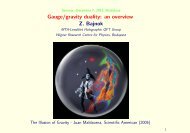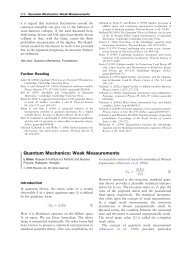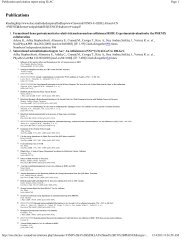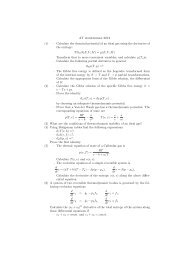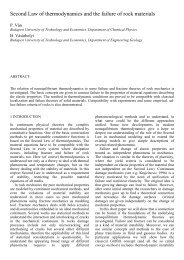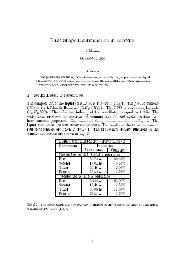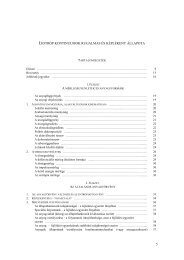Lecture Notes in Advanced Thermodynamics
Lecture Notes in Advanced Thermodynamics
Lecture Notes in Advanced Thermodynamics
You also want an ePaper? Increase the reach of your titles
YUMPU automatically turns print PDFs into web optimized ePapers that Google loves.
1 Introduction<br />
1.1 Subject of thermodynamics<br />
What is the subject of thermodynamics?<br />
– elementary approach: physics of heat, temperature and energy<br />
→ eng<strong>in</strong>eer<strong>in</strong>g advantage: perform<strong>in</strong>g practical calculations of energy<br />
transfer processes (classical thermodynamics course)<br />
– advanced level: general background and framework of macroscopic<br />
physics<br />
→ eng<strong>in</strong>eer<strong>in</strong>g advantage: better understand<strong>in</strong>g of other macroscopic<br />
physics courses (solid mechanics, fluid mechanics, classical thermodynamics,<br />
electrodynamics, physical chemistry)<br />
1.2 Mathematical models <strong>in</strong> thermodynamics<br />
1.2.1 Basic concepts<br />
thermodynamic system : a mathematical abstraction which is used for<br />
modell<strong>in</strong>g a piece of reality, a system is a collection of <strong>in</strong>teract<strong>in</strong>g bodies<br />
thermodynamic body<br />
: the smallest <strong>in</strong>dividual piece of a system<br />
state : the set of all pieces of <strong>in</strong>formation which determ<strong>in</strong>es our whole<br />
knowledge from the system, time and space dependent.<br />
state variables : mathematical objects which are used to represent the<br />
state, they can be numbers, functions, etc. . .<br />
1.2.2 Classification of models<br />
different areas of thermodynamics → different features of state variables<br />
phenomenology - statistics<br />
– phenomenological: state variables are related directly to macroscopic<br />
features of the material<br />
– statistical: state variables are related to the behaviour of the microscopic<br />
particles, and macroscopic features are derived from them by<br />
statistical methods (not covered <strong>in</strong> this subject)<br />
2



